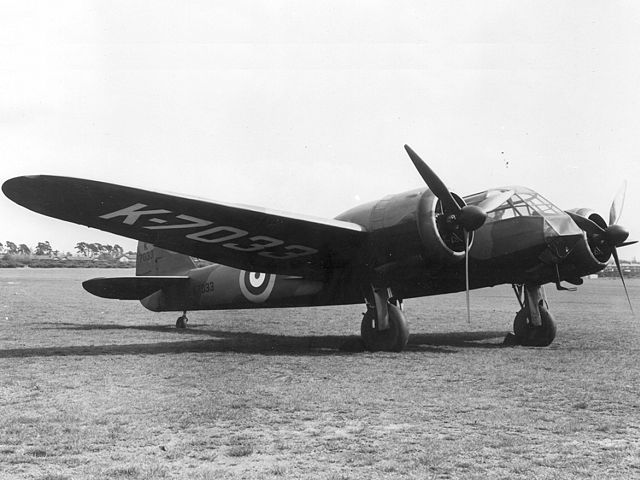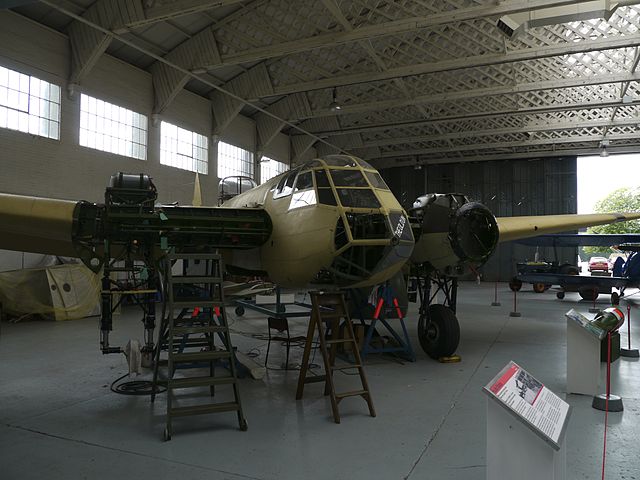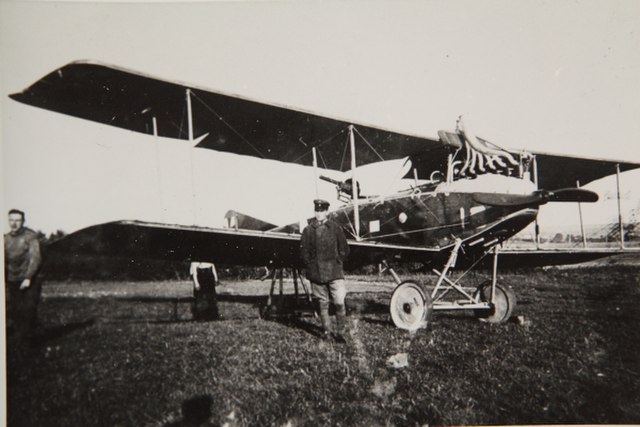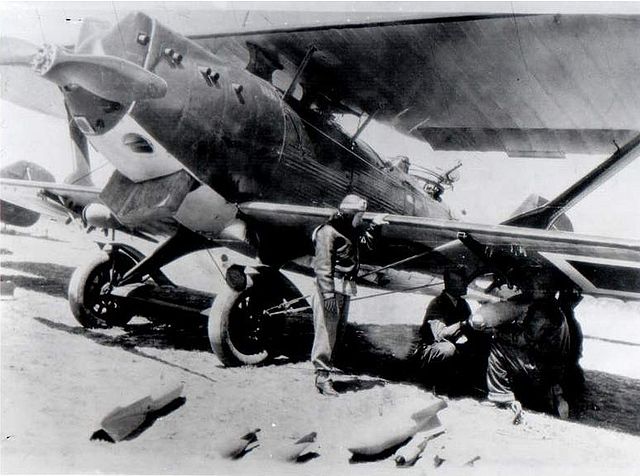The Bristol Blenheim is a British light bomber designed and built by the Bristol Aeroplane Company, which was used extensively in the first two years of the Second World War, with examples still being used as trainers until the end of the war. Development began with the Type 142, a civil airliner, after a challenge from the newspaper proprietor Lord Rothermere to produce the fastest commercial aircraft in Europe. The Type 142 first flew in April 1935, and the Air Ministry, ordered a modified design as the Type 142M for the Royal Air Force (RAF) as a bomber.
Bristol Blenheim
The first production Type 142M with the military serial registration K7033, which served as the only prototype and made its first flight in June 1936.
Blenheim Mk I reconstruction by the Aircraft Restoration Co at Duxford, for the owners, Blenheim (Duxford) Ltd. The reconstruction is based upon a restored Bolingbroke airframe with restored Blenheim Mk I nose section with its "stepless cockpit".
A Blenheim Mk I in formation flight with a Supermarine Spitfire
A light bomber is a relatively small and fast type of military bomber aircraft that was primarily employed before the 1950s. Such aircraft would typically not carry more than one ton of ordnance.
Circa 1937. The single-engine PZL.23 Karaś was the main light bomber used by Polish forces at the beginning of World War II.
1943. A twin-engine Lockheed Hudson of No. 2 Squadron RAAF. Its crew and ground staff pose for the photographer, prior to loading the Hudson with its bomb load in the foreground.
An Albatros C.III of the German Luftstreitkräfte, circa 1916. While it was designed as a "armed reconnaissance" type, the C.III was also a light bomber of World War I.
1937. Turkish air force pilot Sabiha Gökçen inspects her Breguet 19 as it is loaded with bombs.








